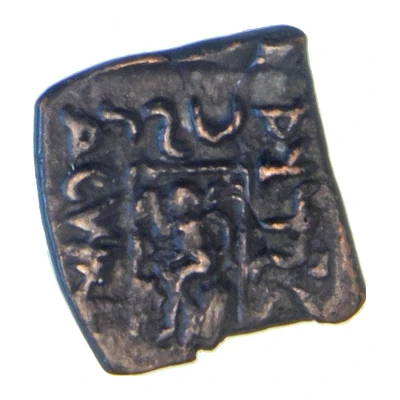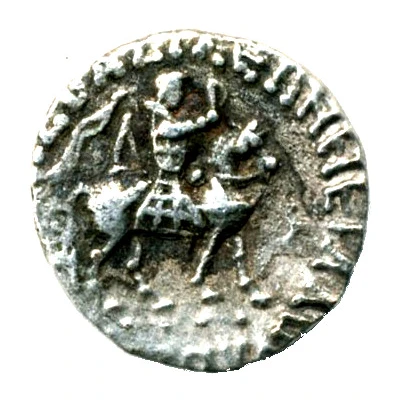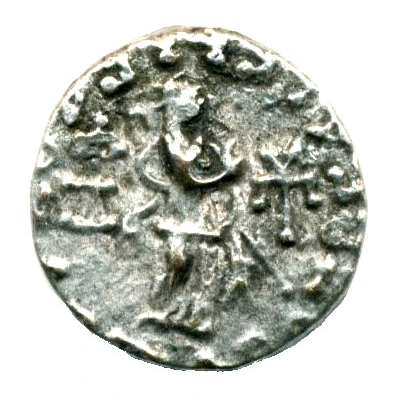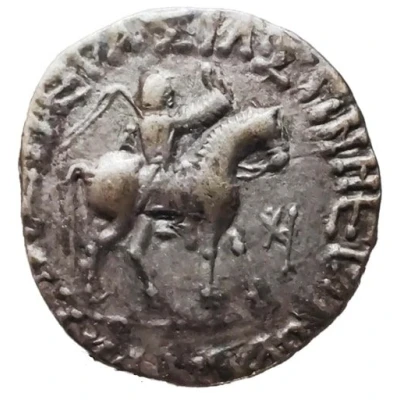
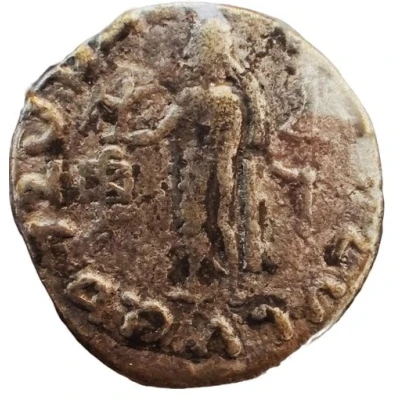

© riteshjainca
Tetradrachm - Azes 35 - 12 BC 35 BC - 12 BC
| Silver | 9.2 g | 24 mm |
| Issuer | Indo-Scythian Kingdom |
|---|---|
| Type | Standard circulation coin |
| Years | 35 BC - 12 BC |
| Currency | Drachm (200 BC to 400 AC) |
| Composition | Silver |
| Weight | 9.2 g |
| Diameter | 24 mm |
| Shape | Round (irregular) |
| Technique | Hammered |
| Orientation | Coin alignment ↑↓ |
| Demonetized | Yes |
| Updated | 2024-10-10 |
| Numista | N#352842 |
|---|---|
| Rarity index | 95% |
Reverse
Zeus Nikephoros standing left; Monogram to left, Kharoshthi letter to right
Script: Kharosthi
Translation: Maharajasa Rajarajasa Mahatasa Ayasa
Interesting fact
One interesting fact about the Tetradrachm - Azes (35 - 12 BC) coin from the Indo-Scythian Kingdom is that it features a unique blend of Greek and Indian influences in its design. The coin's obverse side features a portrait of King Azes, while the reverse side depicts a seated Zeus, a common motif in Greek coinage. However, the coin's design also incorporates Indian elements, such as the use of the Brahmi script to write the king's name and the presence of a wheel symbol, which is a common motif in Indian art and architecture. This blending of cultural influences reflects the Indo-Scythian Kingdom's position as a crossroads of trade and cultural exchange between the ancient Greek and Indian worlds.

